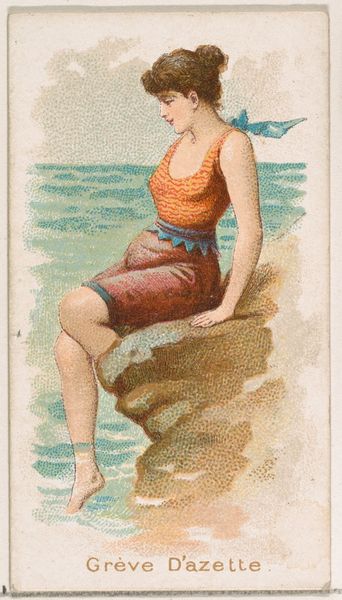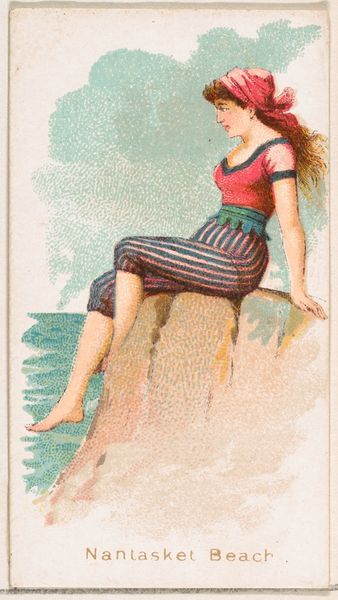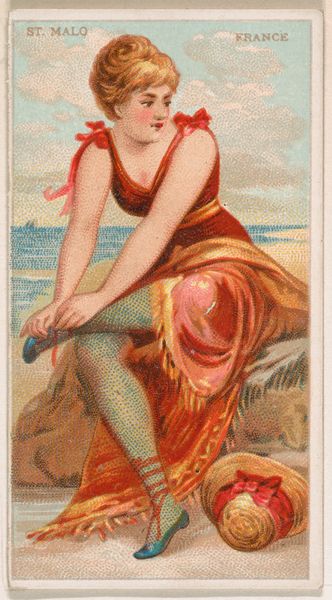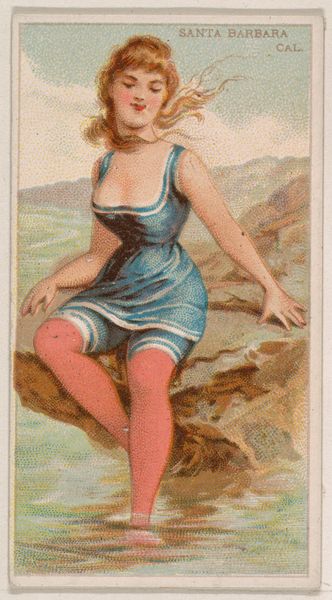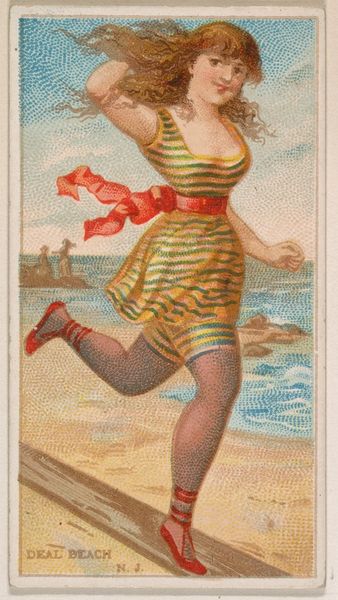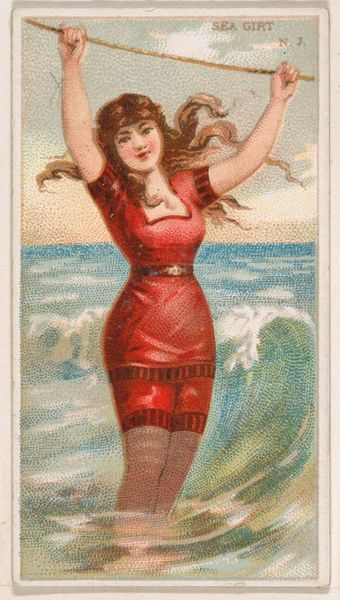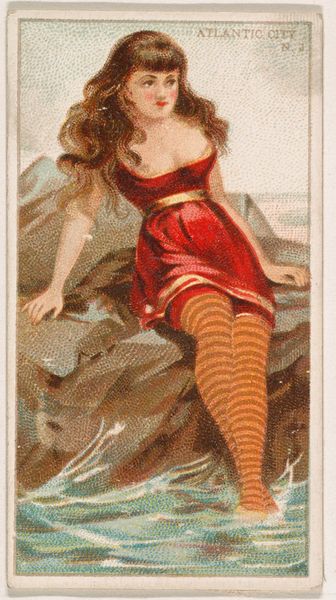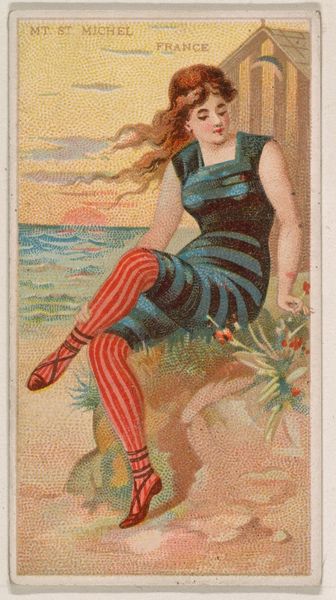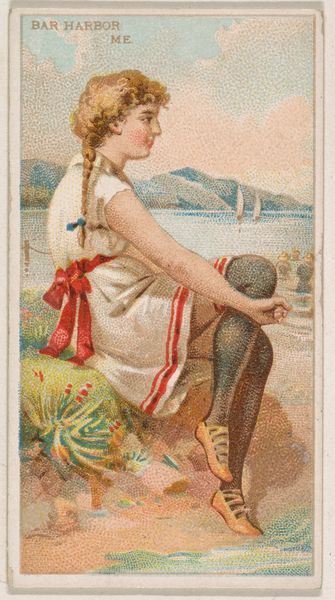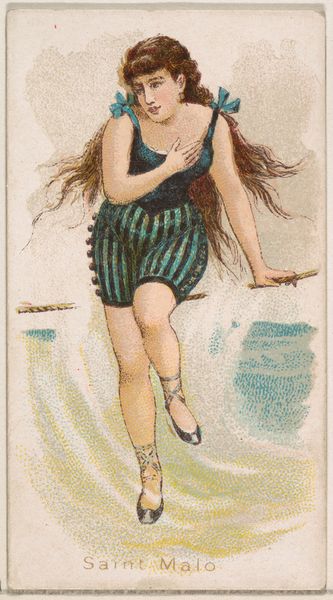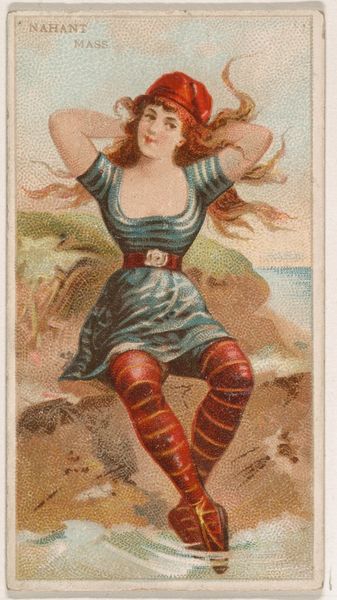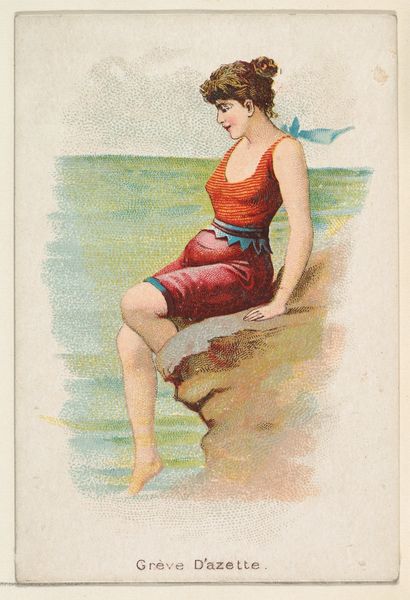
Cherebourg, France, from the Surf Beauties series (N232), issued by Kinney Bros. 1889
0:00
0:00
Dimensions: Sheet: 2 3/4 × 1 1/2 in. (7 × 3.8 cm)
Copyright: Public Domain
Curator: Here we have "Cherebourg, France, from the Surf Beauties series (N232)", created in 1889 by the Kinney Brothers Tobacco Company. This particular example resides here at the Metropolitan Museum of Art. It's a drawing, specifically a print, invoking the aesthetics of impressionism and ukiyo-e, crafted with photography and watercolour techniques. Editor: The overwhelming first impression is how intensely this small print aestheticizes this woman’s figure within a commercial frame, literally, it’s the frame of the product’s box. The red bathing suit, with the stylized waves, and the placid facial expression almost remove her agency. Curator: Indeed. It's important to consider the historical context. This card was originally a premium included in tobacco products. These promotional items were tools in marketing, they became hugely popular collectibles. They provide tangible insights into the commercial and consumer culture of the late 19th century. Editor: Right, and seeing it that way brings the colonial dimensions into sharper focus. These "Surf Beauties" tap into exoticism, into an emergent tourism industry selling fantasies of escape and leisure that are deeply entangled with class and race. How are the female bodies of different places turned into images of commodified leisure, how the company's assets contribute to that marketing system? Curator: Note the technical execution. The flatness of the watercolor enhances the commercial printmaking process. The choice of printing photography reflects an industrial drive toward mechanized modes of image reproduction. The use of ukiyo-e gives us additional insight, how their business model was conceived by others that wanted to reproduce foreign influences. Editor: And it also opens conversations about class and labor: who was able to buy these tobacco products, who labored in the factories and fields producing the tobacco, and who made the images? All that feeds into how images like these reinforce very skewed and highly sexualized portrayals of femininity. Curator: The production and circulation of images like these reflect consumer capitalism taking hold, connecting artistic choices with industry strategies. Editor: By interrogating images like these we learn about those exploitative underpinnings, it challenges us to rethink the supposedly "natural" relationships between women, beauty, consumption and labor. It serves to critique inequalities. Curator: Seeing "Cherebourg, France" up close encourages to analyze the art-making strategies of production during the Gilded Age, highlighting how art was integral to the wider world. Editor: Absolutely, looking beyond the picture is crucial, especially towards the economic and social conditions in play.
Comments
No comments
Be the first to comment and join the conversation on the ultimate creative platform.
